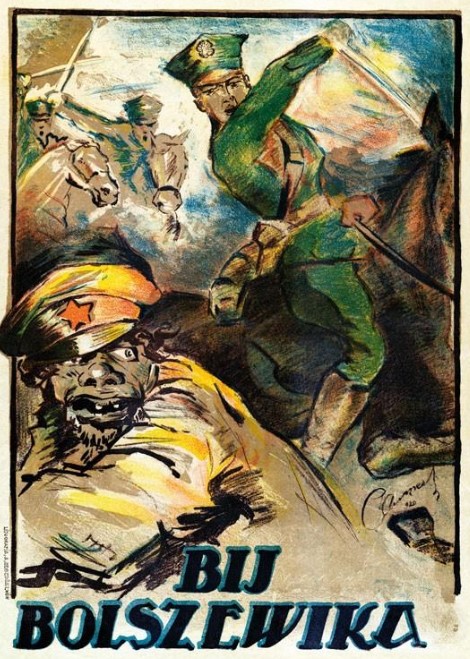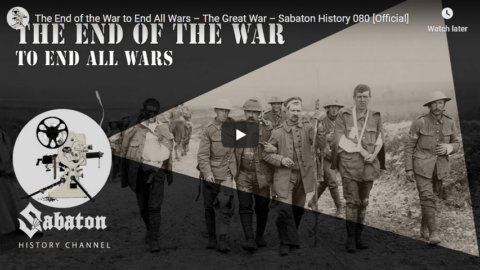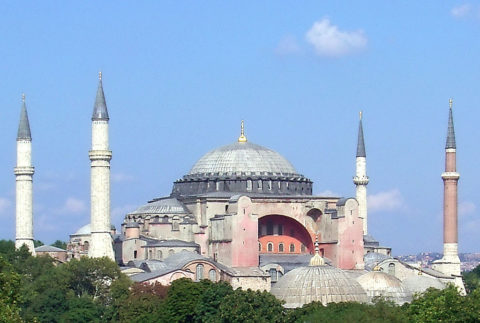World War Two
Published 13 Aug 2020While battles rage across the world, women at home are fighting for their basic emancipation. In Egypt, Huda Shaarawi stands at the centre of this struggle.
Join us on Patreon: https://www.patreon.com/TimeGhostHistory
Or join The TimeGhost Army directly at: https://timeghost.tvFollow WW2 day by day on Instagram @World_war_two_realtime https://www.instagram.com/world_war_two_realtime
Between 2 Wars: https://www.youtube.com/playlist?list…
Source list: http://bit.ly/WW2sourcesHosted by: Anna Deinhard
Written by: Spartacus Olsson and Fiona Rachel Fischer
Director: Astrid Deinhard
Producers: Astrid Deinhard and Spartacus Olsson
Executive Producers: Astrid Deinhard, Indy Neidell, Spartacus Olsson, Bodo Rittenauer
Creative Producer: Joram Appel
Post-Production Director: Wieke Kapteijns
Research by: Fiona Rachel Fischer
Edited by: Miki Cackowski
Sound design: Marek Kamiński
Map animations: Eastory (https://www.youtube.com/c/eastory)Colorizations by:
Daniel Weiss
Carlos Ortega Pereira, BlauColorizations – https://www.instagram.com/blaucoloriz…
Norman Stewart – https://oldtimesincolor.blogspot.com/Sources:
TIMEA
Bundesarchiv
IWM E 817
USHMM
From the Noun Project: Letter by Mochammad KafiSoundtracks from the Epidemic Sound:
Rune Dale – “Scented Nectar”
Deskant – “Genie’s Bane”
Deskant – “Divine Serpent”
Deskant – “Dunes of Despair”
Sight of Wonders – “Call of Muezzin”
Philip Ayers – “Trapped in a Maze”
Skrya – “First Responders”Archive by Screenocean/Reuters https://www.screenocean.com.
A TimeGhost chronological documentary produced by OnLion Entertainment GmbH.
August 14, 2020
How Feminism Came to the Middle East – Women’s Emancipation – WW2 – On the Homefront 006
Warsaw, 1920 – “Smash a Bolshevik!”
Arthur Chrenkoff on the important but little-known Russo-Polish conflict a century ago:
The Polish-Russian war of 1919-20 was the last major conflict where massed cavalry played an important role. Unlike the static Western Front a few years earlier (but similarly to the much more mobile Eastern Front) it was a war of maneuver and speed, conducted over vast swathes of territory. While still fought in a pre-armour era, its conduct directly and indirectly inspired the major proponents of the future tank warfare and the doctrine of blitzkrieg, from the young De Gaulle (who was one of the official French Army observers in Poland at the time) through Tukhachevsky in the Soviet Union to Guderian in Germany. Two million troops from both sides took part in the conflict, making it the most significant foreign intervention against the newly installed Bolshevik regime over the course of the Russian Civil War. It might have even succeeded in strangling communism in its cradle; what prevented the cooperation with the counter-revolutionary White forces was their old imperial hostility to independent Poland (coincidentally, the anti-Hitler German opposition of 1944 was likewise unfriendly to the idea).
The basic story of the war is easily enough told. After 123 years of partition between Russia, Prussia and Austria-Hungary, Poland was recreated (or, really, recreated herself) among the chaos of the late 1918, with the collapse of all three of her occupying empires. The new “Versailles” Poland was smaller than in the past, which led the new government to try to restore by force what has been denied to her at the negotiating table (where Poles had no seat in any case). The Russian Revolution (or rather the Bolshevik coup d’etat) and the following civil war provided a perfect opportunity. Throughout 1919, the reconstituted Polish Army under the command of Marshall Jozef Pilsudski fought against and took over the briefly independent Western Ukraine republic and then marched on Kiev, this time in alliance with the forces of also briefly independent Eastern Ukraine republic (it was Pilsudski’s intention to recreate some form of an independent Ukrainian state – minus the predominantly Polish areas – as part of his larger project to create the Miedzymorze (Intermarum) Confederation of both anti-Russian and anti-German states stretching from the Baltic to the Black Sea).
But the Polish Army became overstretched and the Soviet government, now having defeated its major White opponents, found itself willing and able to stand up to and roll back what they saw as the Polish aggression against historically Russian territories. The Red Army, which sporadically skirmished with the Poles over the previous year, now counter-attacked across the whole wide front across what is now Belarus and Ukraine, driving the Polish Army back at an unprecedented pace of 30 kilometres a day. Soviet Marshall Tukhachevsky ordered his troops “To the West! Over the corpse of White Poland lies the road to worldwide conflagration. March on Vilno, Minsk, Warsaw!” and “onward to Berlin over the corpse of Poland!” Pravda newspaper echoed “Through the corpse of the White Poland lies the way to World Inferno. On bayonets we will carry happiness and peace to working humanity”. British Labour Party and French Socialists vowed not to support “reactionary” Poland; German and Czech unions sabotaged the delivery of crucial military supplies to the beleaguered Poland.
On 10 August, Cossack units of Tukhachevsky’s northern Army crossed the Vistula River north of Warsaw in at attempt to envelop the capital. This was a mistake, as the southern Army, under Budyonny, was still stuck around Lwow, three hundred kilometres to the south-east. For weeks preparing in secret, the last Polish reserves punched through the centre, first cutting off the two Soviet fronts from each other and then in a series of counter-enveloping maneuvers routing three Soviet armies. Now it was the Poles’ turn to advance 30 kilometres per day, as the Red Army collapsed and retreated in chaotic circumstances. The Polish counter-strike subsequently became known as “Cud nad Wisla” (Miracle of the Vistula), but it was less of a supernatural intervention and more a combination of several favourable factors: Soviet missteps, good Polish organisation, the growing hostility between Stalin and Trotsky as well as various military commanders, which hampered the cooperation between the Soviet fronts. Last but not least, and this was only revealed in 2004, Polish cryptographers had managed to break the Red Army codes – just as they would later be instrumental in breaking the German Enigma.
“The End of the War to End All Wars” – The Great War – Sabaton History 080 [Official]
Sabaton History
Published 13 Aug 2020November 11, 1918. The end of the Great War. A war that was also dubbed “the war to end all wars”. And many truly wished that the war’s countless horrors, which had caused the terrible deaths of millions of soldiers and civilians, and had left so many of its survivors crippled and scarred for the rest of their lives, would never repeat themselves. But could this truly be the war that ended the need for war? Was there a solution that promised everlasting peace? Could war even be outlawed? Or was mankind doomed to repeat itself?
Support Sabaton History on Patreon: https://www.patreon.com/sabatonhistory
Listen to The Great War (where “The End of the War to End All Wars” is featured): https://music.sabaton.net/TheGreatWar
Watch the Official Lyric Video of The End of the War to End All Wars here: https://www.youtube.com/watch?v=oXnnb…
Listen to Sabaton on Spotify: http://smarturl.it/SabatonSpotify
Official Sabaton Merchandise Shop: http://bit.ly/SabatonOfficialShopHosted by: Indy Neidell
Written by: Markus Linke and Indy Neidell
Directed by: Astrid Deinhard and Wieke Kapteijns
Produced by: Pär Sundström, Astrid Deinhard and Spartacus Olsson
Creative Producer: Joram Appel
Community Manager: Maria Kyhle
Executive Producers: Pär Sundström, Joakim Broden, Tomas Sunmo, Indy Neidell, Astrid Deinhard, and Spartacus Olsson
Post-Production Director: Wieke Kapteijns
Edited by: Karolina Dołęga
Sound Editing by: Marek Kaminski
Maps by: Eastory – https://www.youtube.com/c/eastory
Archive by: Reuters/Screenocean https://www.screenocean.com
Music by SabatonSources:
Icons from The Noun Project by: Vectors Point, Locad, Gan Khoon Lay, RF_Design & banjirolove
National Archives NARA
Library of Congress
Bundesarchiv
Bibliothèque nationale de France
Library of Scotland
Imperial War Museums:Q 43463, Q5733, HU 105641, Q 12363, HU 105641, Q 3117,Q 5733, Q 56637, IWM Q 10378, Q 3117,Q 86635, Q 23760, HU 110852, Q 7815, PST5277,
Archives of New Zealand
TRAJAN 117 from Wikimedia
Srg36 from Wikimedia
F l a n k e r from Wikimedia
Guilherme Paula from Wikimedia
Narodowe Archiwum CyfroweAn OnLion Entertainment GmbH and Raging Beaver Publishing AB co-Production.
Hand Tools Vs Power Tools How To Choose
Wood By Wright How 2
Published 30 Apr 2020Which Should You Use? Hand Tools or Power Tools? this is a debate that has been around for over 100 years. Today let’s see which is better and which you should use on your next woodworking project.
—Tools I Use—
https://www.woodbywright.com/tool-sug…—Find Antique tools near you—
http://www.HandToolFinder.comTop Patreon Supporters:
DFM tool Works: https://dfmtoolworks.com/
Erich Keane – https://github.com/erichkeane
Travis Reese
Alan Smith – http://www.flourishinggrace.org/listen/
Gerald Philip Doyon
Andrew Wilson////Help this channel grow\\\\
https://www.woodbywright.com/support/////You Can find me:\\\\
https://www.woodbywright.com/contact-me/Intro music: Tim Sway http://timsway.net/
Background music: Udo Stehle https://www.upwork.com/freelancers/~0…
Instagram: @udostehle
QotD: Eisenhower and Churchill
From the outset the neophyte American commander understood perfectly well that he was being thoroughly scrutinized, and that to permit himself to be overpowered by the prime minister’s aggressive personality and charm would be disastrous. During 1942 Eisenhower won over Churchill and a warm and enduring friendship developed between the two men that survived some bruising encounters.
Their common love of history became a bond. Churchill was happiest when discussing history and its lessons, and in Eisenhower he found not only a worthy companion but also one of the few who could match him. Once while dining at Chequers, Churchill “remarked to Eisenhower that he had studied every campaisgn since the Punic Wars,” leading Commander Thompson to whisper to his neighbour, “And he’s taken part in most of them!”
Carlo d’Este, Warlord: A life of Winston Churchill at war, 1874-1945, 2008.







